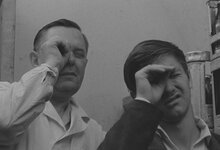
The selected films are restored to the way they were when they were first released in cinemas. Thanks to digitisation, the films are more accessible and reach a wider audience.
The aim of the digital restoration is to make the film as close as possible to the way the audience could see it when it was first shown. To find out what a particular film looked like when it was shown on screen, we first conduct extensive research in historical sources and surviving materials. We then select the materials that will best serve as a source for digitisation. The digitisation itself is carried out in an external studio, most often at UPP. We place the film print back in the safety of the depository and continue to work on the digitised form - digitally removing those elements that were demonstrably not present at the time of the first screening and matching the film to the colour tones (grading) that the original material had.
What's the difference between digital restoration and digitisation? It's a similar process whereby the source material is scanned - which is then returned to the depository - and then the image and sound impurities that were not originally part of the work are digitally removed. Digital restoration is more challenging, however, because it is preceded by detailed research and investigation into film and non-film materials, including foreign materials. Both processes lead to making classic films accessible in the current digital environment, while the original film materials continue to be preserved with care in the depository so that they can continue to be used for future projects.
Thanks to the financial support of Eduard Kučera and Milada Kučerová and the cooperation with the Karlovy Vary International Film Festival and UPP, the Národní filmový archiv is able to make available a constantly developing portfolio of classic film gems.








































































